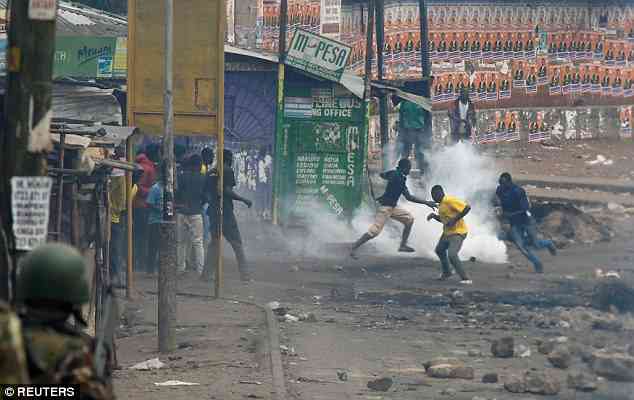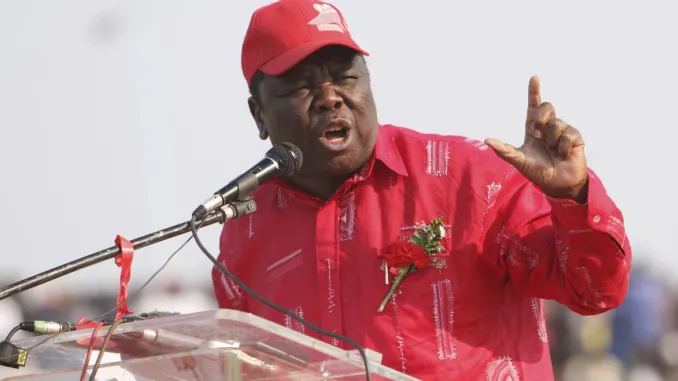
IN many African countries, democracy often means electing representatives who then make decisions with little interaction between lawmakers and the populace.
Accountability for elected officials is minimal, and citizens frequently feel disconnected from the political process.
However, recent protests in Kenya have redefined political and civic engagement, particularly among young people.
One notable feature of the protests against the Finance Bill in Kenya was their "leaderless" nature. Generation Z led these protests, organised primarily through social media.
Initially, government officials and parliamentarians dismissed the movement, convinced it would fizzle out. Their mockery led to the popular protest slogan, "they will not believe".
As the protests grew, Kenyan Vice-President Rigathi Gachagua admitted the state was unprepared for their magnitude, as intelligence agencies failed to gauge the extent of public discontent The movement's organic and leaderless structure made it difficult for the government to suppress the protests using state resources.
Accusations of sponsorship by certain groups faded when it became clear there was no designated leader. This forced President William Ruto to concede to the protesters' demands and withdraw the bill.
The key lesson here is that group leadership can achieve better results with less harm, as the state struggles to target a diffuse movement.
- Mavhunga puts DeMbare into Chibuku quarterfinals
- Bulls to charge into Zimbabwe gold stocks
- Ndiraya concerned as goals dry up
- Letters: How solar power is transforming African farms
Keep Reading
In Zimbabwe, a similar scenario unfolded with the This Flag Movement.
The movement's lack of political endorsement initially gave it widespread support.
However, having a visible leader made it easier for the state to target and suppress the movement through violence, persecution and arrest on flimsy charges. Pastor Evan Mawarire, the movement's face, faced numerous threats and was forced into exile.
Both the This Flag Movement and the Kenyan protests lacked early support from opposition politicians. In both cases, opposition leaders were in a way co-opted into the protests due to the massive support of these movements.
One can argue that had the opposition jumped on This Flag movement earlier on, they would have contributed to massive political gains. The opposition has advantages of structures, mass appeal and resources, both human and financial, and an organisation to sustain a longer resistance.
In Kenya, the lack of a clear leader posed challenges for the government in negotiations, highlighting the inherent tension in leaderless movements claiming to be apolitical.
The biggest contestation in movements is the idea that they are not political, yet by their very nature, they are triggered by political events.
Politics is a negotiated space.
Social media played a crucial role in organising the Kenyan protests.
While the power of social media in Africa has been evident since the Arab Spring, the involvement of a generation previously seen as apolitical signals a shift in the political landscape.
Another lesson that is worth noting is how social media has been used both to educate and mobilise the populace on key issues.
Social media has been viewed by many as a source of misinformation, disinformation and in many cases just a space for entertainment.
The quality of engagement on social media during the protests was impressive, with young people demonstrating a clear understanding of the Finance Bill, its implications, and alternative solutions. This must be applauded.
The young Kenyans showed that they had a clear understanding of how loans, and the International Monetary Fund policies, in particular, will affect their future.
Despite this, many young Kenyan protesters were unprepared for the state's violent response. While they anticipated tear gas, the use of live bullets led to fatalities and divisions among the protesters.
This could be seen from the “get ready with me for the protests TikTok videos” where the protestors encouraged everyone to ensure that they have something to cover their faces.
In Zimbabwe, state violence has a long history, from the bloody 2008 election violence to recent incidents where citizens were arrested or shot during protests. Recently, interim leader of the Citizens Coalition for Change Jameson Timba and 70 others were arrested and remanded in custody for allegedly holding an unauthorised political meeting.
This history of brutality has instilled fear in the populace, often deterring older generations from mobilisng against the government.
The Kenyan protests offer valuable lessons in youth engagement and the power of social media.
However, the differences in state responses highlight the unique challenges each country faces. Under intense pressure, the Kenyan government withdrew the bill and sought concessions — a scenario that has yet to occur in Zimbabwe. The Zimbabwean state has effectively used a heavy-handed approach to quash dissent.
In conclusion, while the Kenyan protests demonstrate the potential for youth-led, social media-driven movements to effect change, the entrenched use of state violence in countries like Zimbabwe presents significant obstacles.
Despite these challenges, the Kenyan experience offers hope and valuable insights for future civic engagement across Africa.
- Mapfumo is a research associate with African Leadership Centre in Nairobi, Kenya.










